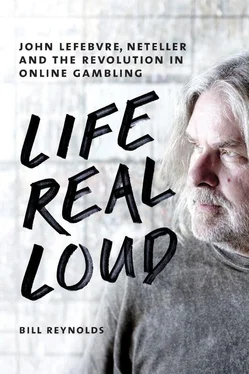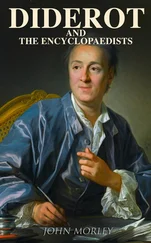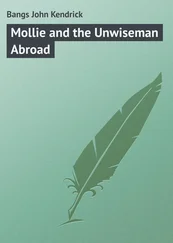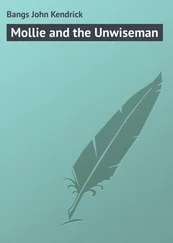In November 2004, Lefebvre, freshly minted resident of Malibu, California, flew to Tuscany for a boys’ weekend with some buddies. The planned bacchanal went awry when one of the buds, because of a miscommunication, brought his young children with him. The weekend never threatened to become a case of what happens in Toscana stays in Toscana.
After Italy, Lefebvre flew six hundred miles north to Frankfurt to start another kind of party. He met his old buddy Jim Hoggan; Hoggan’s wife, Enid Marion; and Geoff Savage. The purpose of the Frankfurt rendezvous was to launch a trip to Bhutan — a trip Lefebvre was financing with four first-class tickets to India, five thousand miles away (approximate cost: $60,000). Lefebvre was looking for more ways to invest in good-works projects, and Hoggan was helping him direct more of his fortune.
Sometime after the Calgary drug raid of 1969, Hoggan departed for the West Coast, eventually entering law school at the University of Victoria around the time Lefebvre was enrolled at the University of Calgary. The two kept in touch through Jim’s brother Joe, who was a social-connector type. He made sure everyone reconvened at least every couple of years, snowboarding at Whistler, for instance, or reminding Lefebvre and Bergman to stop in Vancouver en route to India in 1990.
For Hoggan, the lifelong bond with Lefebvre had formed because of their shared interest in the drug culture — LSD, other psychedelics, and marijuana, never hard drugs. That interest lasted but a year. Hoggan was lucky enough not to have been arrested, but things changed for him anyway. “After the bust, the whole thing just stopped,” Hoggan says. “I don’t know why. I maybe smoked dope once in a while.”
Lefebvre thinks he and Hoggan represented the two sides of the hippie dream. “He’s the political activist, and I’m the mystical hedonist, whatever that is. Put the two together and we’re fulfilling the dream we had when we were kids. It’s kind of like Hesse’s characters, Narcissus and Goldmund. One of them is doing it as the monk and the other’s doing it out in the world, fortunate not to have picked up the plague yet.”
The double portrait is apropos to a point, but the Lefebvre-Hoggan relationship is not quite as neat as the one Hesse’s 1930 novel delineates. When Lefebvre came into his money, “mystical hedonist” might have been the appropriate moniker. But pleasure-seeking and navel-gazing only got him so far before he reached his limit. He wanted new horizons, and the two of them went to work to raise eco-consciousness out of Vancouver. Hoggan introduced Lefebvre to David Suzuki, for instance, and to the Dalai Lama’s right-hand man, Victor Chan. And with Lefebvre’s Neteller earnings, he and Hoggan would create a website designed to aggressively debunk climate-change deniers. And now here they were on another adventure, this time to help protect one of largest areas of biodiversity on the planet.
The quartet flew on Lufthansa direct from Frankfurt to Delhi International Airport and plunged themselves into instant culture shock. Lefebvre and Hoggan had been to India before, so they knew about its extremes. They were booked into the Sheraton. Not five-star, but good enough. The hotel amenities were fine, but when they walked outside they saw people sleeping in the ditch. That was India. Lefebvre’s first job as tour guide was to take everyone to see the Red Fort, the seventeenth-century emperor’s palace, and the Chandni Chowk (moonlit square). The famous market has a wide boulevard and runs two miles east to west to the old town of Delhi. Lefebvre recounts,
On either side there are little roads the size of this rug. The air is filled with electrical wires going everywhere, all stolen electricity. Even so, people were running puny little diesel generators. It’s noisy and people die and when people die the living walk down the street and throw flowers on them. You’re supposed to cry and stop, and there are snake charmers and people selling and radios blaring. I’d look back and Jim would be going [makes throat-slitting gesture].
You walk to the other end of the Red Fort, which comes to an intersection. You turn right and down the block is a spice market. You hear people coughing, and as you walk into it you start coughing. These guys are sitting on mountains of spice going AAAACHOOOOOOO! AAAGGCHHHHHHA AHHAAA WAAAAHAAAA! Everyone’s coughing from the cayenne in the air. You’re gagging — the place is not in the open air anymore. There are tunnels and you’re walking down and I say to the guy, “No, no, no!” and we turn around and run back. You’re seeing lepers and kids that are all slimy and covered in snot and they’re trying to touch you.
At the opposite end, away from the Red Fort, at the intersection, was a four-story printing business. The shop ran off pictures of Hindu deities such as Shiva, the auspicious one, and Ganesha, the elephant that rides a mouse. Ganesha’s head represents the soul, the most real of all realities a human can experience, while the trunk indicates Om, or cosmic reality. Meanwhile, the body symbolizes corporeal everyday living, the sneezing, coughing, wheezing, physical reactions to the snot and piss and shit that confront us.
Lefebvre recalls, “If you walked up the stairs and acted like you belonged there, everybody let you go, because you’re a sahib, right? If you were a bit aggressive, you could get on the roof four stories up. You’d look down the alleyway to see two and a half, three miles of people crowded in. Those tuk-tuks, the three-wheeled rickshaws that have a cab on the back that conveys two people, they’re all just honking at each other. Beep-beep! Beep! Beep-beep! Nobody’s moving.”
The next day, the four travelers flew from Delhi to a town close to the Bhutan border. From India’s human congestion they headed toward a country containing only six hundred thousand souls. “People were completely knocked out by how weird India was,” says Lefebvre. “The water that ran beside the road was black, like oil. Who knows what was in it? People just throw their shit everywhere; they shit on the street. Then you get to this place where poor Indian people are crushed up against the border, staring into Bhutan.”
On the map, from Delhi to a crossover point — Phuentsholing, Bhutan, say — the road runs about nine hundred miles. Near the border, they met their Bhutan contacts from Future Generations, including its president, Daniel Taylor, a self-made visionary who was creating organizational structures to reduce pollution in this densely populated region of the world by changing the way Southeast Asians looked at their major rivers and their environment in general. Lefebvre’s party would see the Brahmaputra River, which sweeps out of Arunachal Pradesh, underneath Bhutan through places like Guwahati and Dhubri, the plains of India, and then swings south to Bangladesh. The Brahmaputra is massive, one of four rivers (along with the Yangtze, Salween, and Mekong) of the project to which Lefebvre contributed money. Hoggan knew Taylor a little. Lefebvre, who had met Taylor just once before, said, “I gave him three or four million bucks.”
The area of focus was the southeast quarter of Tibet, officially the prefectures of the Tibet Autonomous Region, China, which was the source of the rivers. Downstream live one billion people, about fifteen percent of the world’s population. Referring to Taylor, Lefebvre says,
This cat we were running with figured out how to cajole the Chinese into agreeing to turn this whole corner of the Four Great Rivers area into a conservation project. Coming up to the Olympics, the Chinese were hungry for mechanisms of achieving international esteem, which they couldn’t achieve by stopping the pirating of CDs, or human rights violations, or shooting Tibetans in the back for trying to escape to India, or all those things the Chinese have become so adept at. When they were presented with this opportunity to become green, they jumped at it.
Читать дальше












